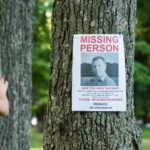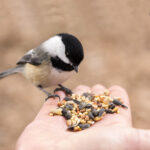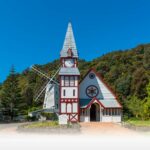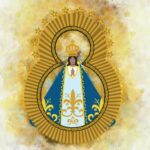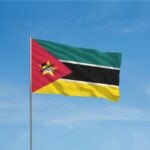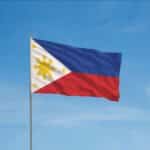Today, we remember the creole martyrs on Commemoration of the Batepá Massacre, observed annually on February 3 in São Tomé and Príncipe. On this day in 1953, government colonists murdered hundreds of creoles — indigenes of São Tomé — under the guise of a communist conspiracy. Unlike how the typical colonist tale plays out, this massacre erupted due to the protests of creoles in their refusal to work under hard conditions of coffee harvesting. The massacre was led by Carlos Gorgulho, taking the lives of innocent citizens through torturous conditions. The day is set aside to commemorate the Batepá Massacre, remembering and honoring the lives that were shamefully lost.
History of Commemoration of the Batepá Massacre
The Commemoration of the Batepá Massacre, also known as Martyrs Day, is an annual federal observance in the country of São Tomé and Príncipe located in Central Africa. This national holiday serves as a memorial day for those who lost their lives in the Batepá Massacre.In the 15th century, the Portuguese arrived in the uninhabited islands of São Tomé and Príncipe and decided to establish sugar plantations within the region. To achieve this feat, they needed workers to harvest the fields, which meant they needed to import African slaves and undesirables from other countries. These imported slaves became known as ‘forros,’ the native creoles of São Tomé and Príncipe.Five centuries later, the capital of the country, São Tomé, became one of the largest producers of cocoa, and at that time Carlos Gorgulho assumed office as governor. The workforce of the large, labor-intensive plantations consisted strictly of contracted laborers from other African countries like Cape Verde. However, a boycott by European chocolate makers led to an overwhelming labor shortage and a need for more workers.Forros considered this labor no better than slavery and refused to work in place of contract workers, which did not sit well with the colonist government. This resulted in harsh policies to force labor and an uprising amongst the people who still refused the labor. By 1953, the government intended to settle 15,000 Cape Verdians with the land of the forros. The government denied these claims, blaming them on communist conspiracies. The people fought back on February 3, leading to a bloody massacre leaving hundreds, and possibly thousands, killed by the government from gun violence, cell suffocation, torture, and even burning.
Commemoration of the Batepá Massacre timeline
São Tomé becomes one of the largest producers of cocoa.
The government proposes to settle 15,000 Cape Verdean contractors with lands of the forros.
On February 2, hand-written pamphlets spread in the capital with threats to kill anyone who contracts forros for forceful manual labor.
On February 3, the people of São Tomé protested, leading to the Batepá Massacre.
Commemoration of the Batepá Massacre FAQs
Is Commemoration of the Batepá Massacre a public holiday?
The Commemoration of the Batepá Massacre is a national public holiday in the country of São Tomé and Príncipe. On this day, most offices are closed during operation hours, and students are not required to go to school.
What happened after the Batepá Massacre?
On March 4, one month after the Batepá Massacre, personnel of the Portuguese International and State Defense Police began looking into the incident to identify the communist who the government claimed was to blame for the violence. However, it was swiftly determined that there was no such conspiracy, and Carlos Gorgulho was given the order to return to Lisbon the next month. There, he was commended by the Minister of the Army and given the rank of general. Seven forros were prosecuted and found guilty at So Tomé of killing two police policemen.
Why is it called the Batepá Massacre?
This holiday and the massacre are named after the village where the massacre occurred and the violence began — Batepá, Mé-Zóchi District, São Tomé Province.
How to Observe Commemoration of the Batepá Massacre
-
Light a candle
Whenever souls pass away, one of the ways we commemorate their memory is by lighting candles on the anniversaries of their deaths or other important days. Since the Commemoration of the Batepá Massacre is a memorial day for those who passed away in the Batepá Massacre, we can also remember their souls by lighting a candle for them. You do not have to know anyone who passed away in the massacre for you to have a moment of silence with a lit candle.
-
Attend a memorial service
On this day, throughout São Tomé and Príncipe, there are memorial services held in honor of the dead. If you find yourself within the region during this national holiday, make sure you go out of your way to attend a service. You can serve as a source of encouragement for families who have lost dear ones in this horrific incident.
-
Post about it
Just like you, many people would have only just heard about this holiday or still be ignorant about the Batepá Massacre. One way you can get people to know more about this sacred holiday is by spreading the word on social media. You can share interesting facts you have come to discover about the day, or a link to this article so individuals can read all about it themselves.
5 Interesting Facts About The Batepá Massacre
-
It began with one man
After crowds of protesters gathered on February 3, the first person to be killed was Manuel da Conceição Soares.
-
It wasn’t a day’s affair
After Manuel was killed on February 3, a larger protest was formed the following day in Trindade.
-
Some people were suffocated to death
About 28 people were suffocated in a cell by the C.P.I., Indigenous Police Corps.
-
Others were burned
In one estate, 20 forros were burned to death.
-
The government tried to cover it up
After the massacre, under the directive of Carlos Gorgulho, authorities dumped several bodies in the sea to avoid trouble.
Why Commemoration of the Batepá Massacre is Important
-
It’s a memorial day
This holiday serves as a memorial day for those whose lives were lost in the Batepá Massacre. This allows not only people affected directly, but the whole nation of São Tomé and Príncipe to have a day to remember the lost souls.
-
It marks an important governmental injustice
The government body of São Tomé and Príncipe carried out an extreme injustice to its people in 1953 under the guise of a communist uprising. Citizens of a nation should not live in fear of the people who were elected to protect and serve them. This day marks that cruel injustice, serving as a reminder for not only the forros but for the rest of the world.
-
It is important for affected families
The Batepá Massacre memorial allows the families who were directly impacted by the massacre another chance to grieve and commemorate their lost loved ones. They can also feel less alone by knowing that we are aware of and remember their suffering.
Commemoration of the Batepá Massacre dates
| Year | Date | Day |
|---|---|---|
| 2023 | February 3 | Friday |
| 2024 | February 3 | Saturday |
| 2025 | February 3 | Monday |
| 2026 | February 3 | Tuesday |
| 2027 | February 3 | Wednesday |



